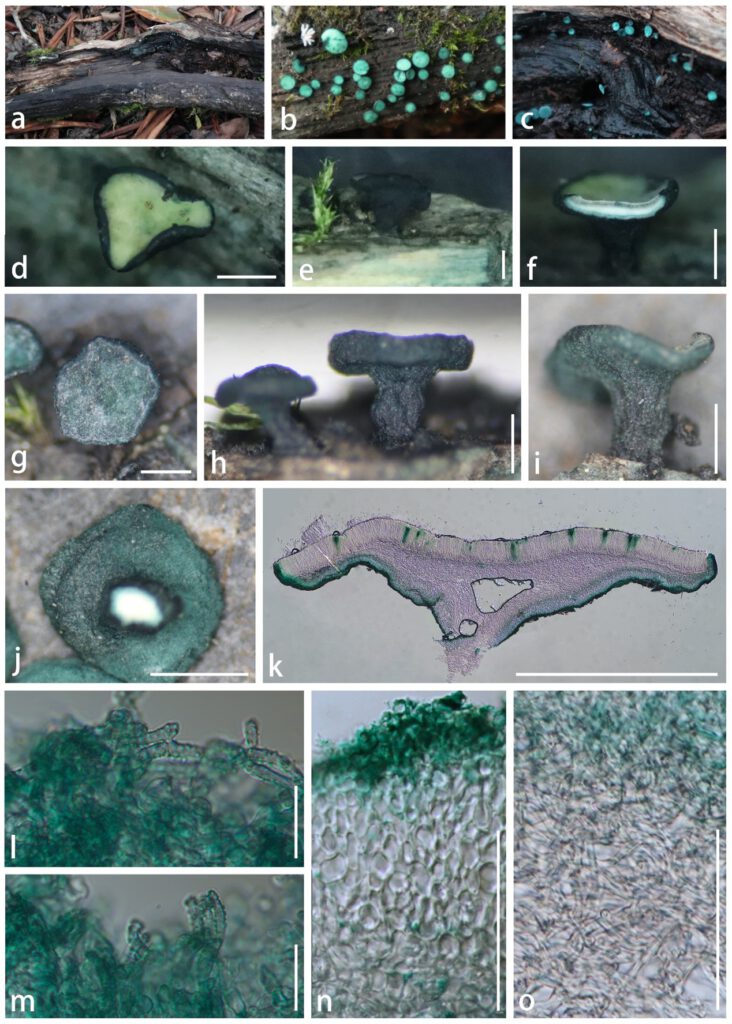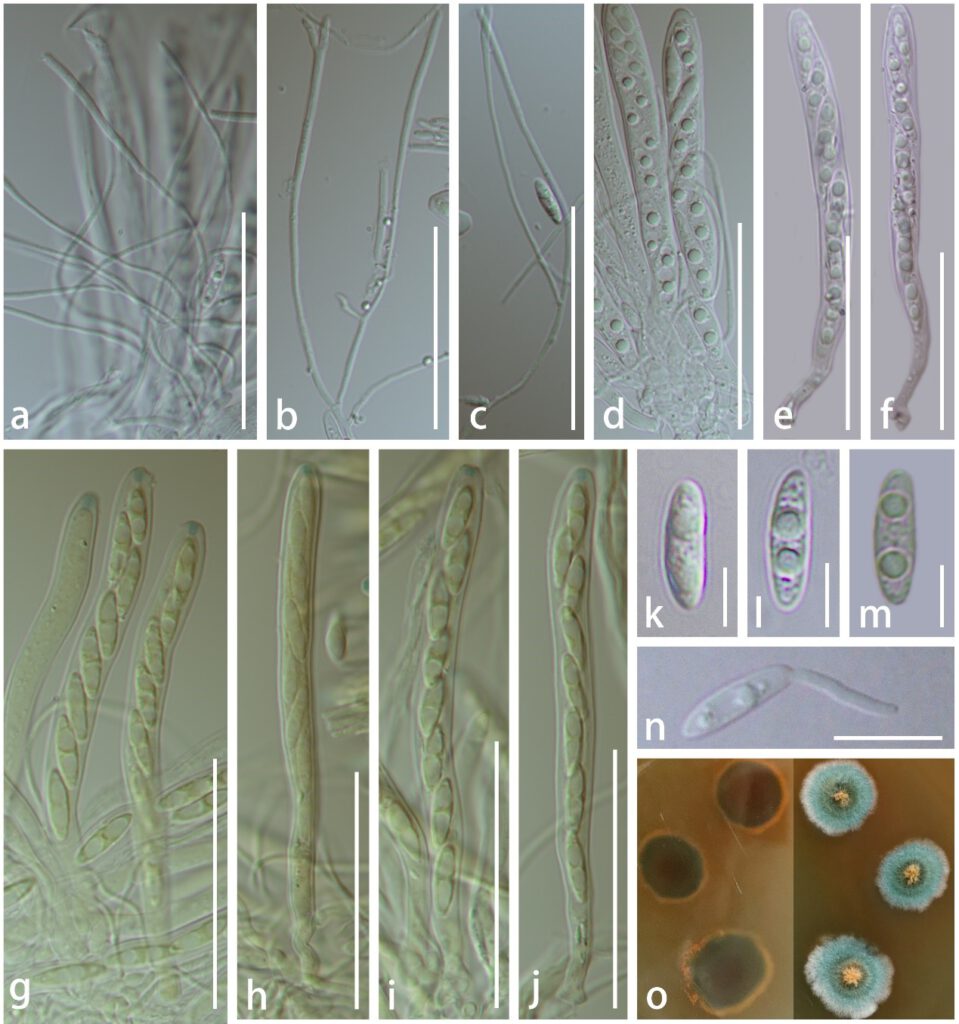Chlorociboria daliensis C.J.Y. Li & Q. Zhao, sp. nov. Fig. 3 and Fig. 4
MycoBank number: MB 559487; Index Fungorum number: IF 559487; Facesoffungi number: FoF 10695;
Saprobic on dead decorticated wood. Sexual morph: Apothecia 1–2 mm wide × 0.5–2 mm high ( = 1.5 × 1.2 mm, n = 20) when dry, scattered, superficial. Disc flat and circular with light bluish-green (25B6) or faience blue (24C7) when fresh, mostly pale yellowish-green (27A4) with jungle green (25F5) patches, green or dark green (26F6 – 26F8)with white powder with the bright blue receptacle when dry. Margins concolorous to the receptacle, slightly curl inward towards the disc. Receptacle wider than the stem, mainly dark green (25F8) nearly black, sometimes bright bluish-green (25A8-25C8) when dry, pustulate, usually vertically rugose, glabrous. Stem 0.1–0.2 mm wide × 0.1–0.4 mm long, short and broad, dark green. Hymenium 70–130 μm, hyaline, colourless or pale green with irregular green patches. Ectal excipulum 36–80 μm thick, elements oriented at a high angle to receptacle surface, comprising textura angularis or textura prismatica cells of 4–9 μm long × 2–7 μm wide with 1–2 μm thick wall, uneven coloring of excipular walls varying from myrtle Green (25F8) to hyaline, gelatinous, dark olive-yellow in 5% KOH. Medullary excipulum 70–170 μm thick, hyaline cells of textura intricata, hyphae 2–4 μm wide, non-gelatinous. Subhymenium not obvious. Tomentum hyphae mostly absent, sometimes present when the receptacle bright blue, 23–30 μm long × 2.3–2.6 μm wide, coiling, roughed, walls thick. Paraphyses 1–3 μm ( = 2 μm, n = 35) wide, filiform, tapering slightly at base, rounded apex, 2–3 septate, branched at base, middle and top, scarcely extending beyond the asci. Asci 76–94 × 5–7 μm ( = 86 × 6 μm, n = 80), uniseriate, 8–spored, cylindric or subclavate, tapering to subtruncate base, thickened wall at apex, amyloid apical pore in Melzer’s reagent; Ascospores (6.3–)9.8–12.7(–14.1) × (2.5–)2.6–3.8(–4.1) μm ( = 11.0 × 3.3 μm, n = 100), Q = (1.9–)2.9–4.1(–4.7) μm, Qm = 3.4 ± 0.4 μm, overlapping, elongate to ellipsoidal, hyaline, slightly asymmetrical, in side view slightly flattened on one side, tapering to narrowly rounded ends, thin-walled, smooth, aseptate with bipolar guttules, hyaline. Asexual morph: Undetermined.
Culture characteristics: Colonies growing on PDA medium, reaching 16 mm diam. in 6 weeks at 20℃, filamentous form, umbonate elevation, fimbriate margin, rough and glistening on the surface, green mycelia with white margin and orange centre in the front view, reverse view dark green, white at the margin, center dark saffron yellow; producing yellow pigments on PDA, producing red pigments on MEA, no sporulation.

Fig 3 Chlorociboria daliensis a–c Fresh ascomata on the wood. d–f Dry ascomata on the wood. (LCJY-203) g–j Dry ascomata on the wood. (LCJY-220) k Vertical section of ascomata. l–m Tomentum hyphae. (LCJY-220) n Close up of ectal excipulum. o Close up of medullary excipulum. Scale bars d = 700 μm, e =500 μm, f = 600 μm, g–h = 400μm, i = 700 μm. j = 600 μm, l–m = 15 μm, n–o = 50 μm.

Fig 4 Chlorociboria daliensis a–c Close up of paraphyses. d–f Asci. g–j Asci in Meltzer’s reagent.) k–m Ascospores.n Germinated ascospore. o Colonies on PDA. Scale bars a–j = 40 μm k–m = 5 μm, n = 10 μm.
